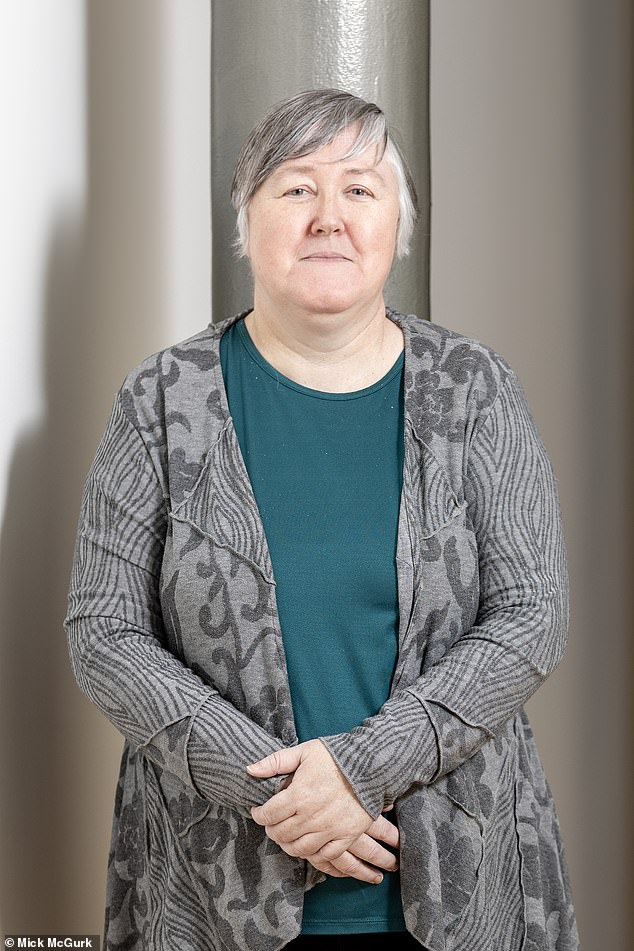Hazel Borland was a shadow of her former self after developing a pain that tormented her for decades.
She started having back pain after the birth of her daughter Nikola, 30 years ago. After 12 years of relentless agony, Hazel was finally diagnosed, at the age of 36, with fibromyalgia, a chronic pain condition that affects 2.5 million people in the UK.
Other symptoms include fatigue, trouble sleeping, brain fog (known as fibro fog), depression and anxiety. There is no cure and, as many of those affected feel, painkillers make little difference.
“I have widespread pain that is always present in the background, but I also have ‘nerves on fire’ pain, where my nerve endings, in one area or more spread, are ultra-sensitive,” says Hazel.
“My worst areas of pain are my lower back and legs.”
Hazel, who was previously outgoing and had an active social life, stopped exercising and had to give up her job as an administrator, rarely leaving her home in Elderslie, Scotland.
But his life has now been transformed, not by a new miracle pill but, at least in part, by cognitive behavioral therapy (CBT), a form of talk therapy that trains people to think differently about pain. and how to deal with it.
After 12 years of relentless agony, Hazel Borland (pictured) was finally diagnosed, at the age of 36, with fibromyalgia, a chronic pain condition that affects 2.5 million people in the UK.
“I had tried everything: painkillers, physiotherapy, antidepressants, but nothing really made a big difference,” says Hazel, 54, married to Allan, 55.
Her daughter Nikola also has fibromyalgia (a genetic link is believed to exist).
‘I stopped going places, seeing friends and family and I stopped work because I was in pain, exhausted and totally worried about it. I have also struggled with depression and anxiety since I have fibromyalgia.
‘But after CBT, everything fell into place. Instead of being consumed by it, I became more accepting of my condition and understood that my way of thinking was affecting my physical health: the fear of pain was preventing me from moving on with my life. I still have pain, but it feels less intense.’
Her condition has improved so much that Hazel is now back to working three days a week as an office administrator and no longer turning down social invitations.
“We go to basketball games and concerts; before that was unthinkable,” he says.

Symptoms of fibromyalgia include back pain, fatigue, sleep problems, brain fog (known as fibro-fog), depression and anxiety.
New research, published in December in the journal Pain, found that 60 percent of fibromyalgia patients who received CBT experienced an improvement in their symptoms.
And it doesn’t seem to matter what type of CBT you have, according to the study from Sweden’s Karolinska Institute.
Researchers offered 274 people with fibromyalgia traditional CBT (a combination of negative thought management, relaxation, exercise and pacing, i.e. no overdoing it); or exposure-based CBT (which encourages the patient to repeatedly confront situations or activities that he previously avoided because of her pain).
After the ten-week online program, which included eight written “modules” and regular contact with a therapist, about six in ten patients in both groups reported improvements.
“CBT is based on the theory that if you change your behavior around pain, you can affect your perception of pain,” Maria Hedman-Lagerlof, a psychologist who led the study, told Good Health.
‘The result may be that you worry less about the pain and don’t let it affect the way you live your day to the same extent.

Unlike other chronic pain diseases, such as osteoporosis and endometriosis, which have a direct “visible” cause, fibromyalgia is thought to be associated with a hypersensitive and over-responsive nervous system.
“In this study, fibromyalgia patients who benefited experienced a minimum of 14 percent improvement in symptoms, and this improvement continued for 12 months after completing treatment.”
Previous research using MRI scans of the brain suggests that people with fibromyalgia may actually “feel” less pain after CBT. In one study, published in the Clinical Journal of Pain in 2017, 16 people with catastrophe-prone fibromyalgia (anticipating the worst and feeling helpless over the pain) received four weeks of CBT or education about the condition.
Those who received CBT reported significantly less pain and catastrophizing at the six-month follow-up.
Dr Patrick Hill, clinical and health psychologist and board member of the British Pain Society, explains: “All pain is produced by the brain and central nervous system, according to what the brain thinks is happening; it doesn’t. it is neither produced nor detected by the body. in the brain.’
“You can’t see pain on an MRI, but you can see brain activity associated with pain, and studies have suggested that this brain activity may be lower in people with fibromyalgia who have had CBT.”
Unlike other chronic pain diseases, such as osteoporosis and endometriosis, which have a direct “visible” cause, fibromyalgia is thought to be associated with an oversensitive and oversensitive nervous system.
Those affected experience pain and fatigue in response to harmless triggers, such as being more active than usual. “Over time, biological, social and psychological factors interact with each other and create vicious cycles,” says Dr. Hill.
‘If you have continuous pain, you will naturally do less; This leads to muscle atrophy, then you gain weight, lose confidence and your mood begins to decline.
“You may not be able to work, lose money, feel depressed, and stop going out, all of which make the pain more pervasive.”
Initially, Hazel’s back pain was attributed to her daughter’s difficult delivery.

There is no cure for fibromyalgia and many sufferers find that painkillers make little difference.
“But it became widespread and then I developed constant fatigue and brain fog,” he recalls.
‘I felt very distressed. I went to see my GP and was prescribed painkillers, antidepressants and physiotherapy, but none of that really helped.’ (Antidepressants are thought to help by increasing chemical messengers in the spinal cord that reduce pain signals.)
CBT is a relatively new approach to pain, included in the National Institute for Health and Care Excellence (NICE) guidelines in 2021. These state that people with “chronic primary pain”, without a clear underlying cause and that lasts more than three months, they should no longer be treated with common analgesics such as paracetamol, non-steroidal anti-inflammatory drugs (such as ibuprofen), benzodiazepines or opioids. Instead, they should try other approaches, such as exercise programs, psychological therapies (e.g., CBT), acupuncture, and antidepressants.
The NICE guidelines reflect a lack of evidence that common painkillers make any difference to the quality of life of people with chronic pain because they develop tolerance to the medicine. Additionally, they can cause side effects.
“The general rule of thumb is that these drug therapies are about 30 percent effective for 30 percent of patients,” says Dr. Kim Lawson, a pharmacologist at Sheffield Hallam University and chair of the organization’s medical advisory board. charity Fibromyalgia Action UK.
The new study suggests that CBT could be twice as effective as medication. But it doesn’t work for everyone; It is also unclear how long the effects might last; and many patients are skeptical before even trying it.
“We know that it takes on average two to three years, but frequently up to ten years, to be diagnosed with fibromyalgia, often after having moved from GP to specialist to specialist,” says Des Quinn, president of Fibromyalgia Action UK.
“Then they are told that psychological therapy could help, since some patients feel that they are being told that everything is in their minds and that they are being deceived. It’s not like that, but many patients perceive it that way.’
CBT isn’t about saying pain is “all in the mind,” but recognizing that managing it involves changing your attitude toward it, says Kim Lawson.
“We need to do much more to educate patients and doctors about the complexities of fibromyalgia and that a multi-pronged approach addressing physical, social and psychological factors is likely to provide the best results, so combining medication with psychological support” , he claimed. she says.
Since first developing pain 30 years ago, Hazel has received several cycles of CBT.
“The first one was shortly after I was diagnosed in 2005 and I didn’t find it very helpful,” he says.
“I wasn’t in the right place mentally. I was looking for a pill to help me. It was the last course, which I had about two years ago, that really helped me understand that my mindset affects my physical health.
“I still take painkillers and antidepressants, although in lower doses, but CBT helps me lead a more normal life.”
The NHS is now adopting a CBT-based approach for chronic conditions such as diabetes, atrial fibrillation (irregular heartbeat) and irritable bowel syndrome.
“If you have a condition that causes distressing symptoms, it is normal to feel anger, resentment and worry, and this can become a negative spiral in which the symptoms (and the thoughts and feelings around them) take up more and more space in your life. . ,’ explains María Hedman-Lagerlof.
‘In the end, your whole life can revolve around your medical condition and we know that the more you think about pain, for example, this can lead to the mind becoming more reactive to it – it becomes a highway in the brain . “CBT tries to change that approach.”

